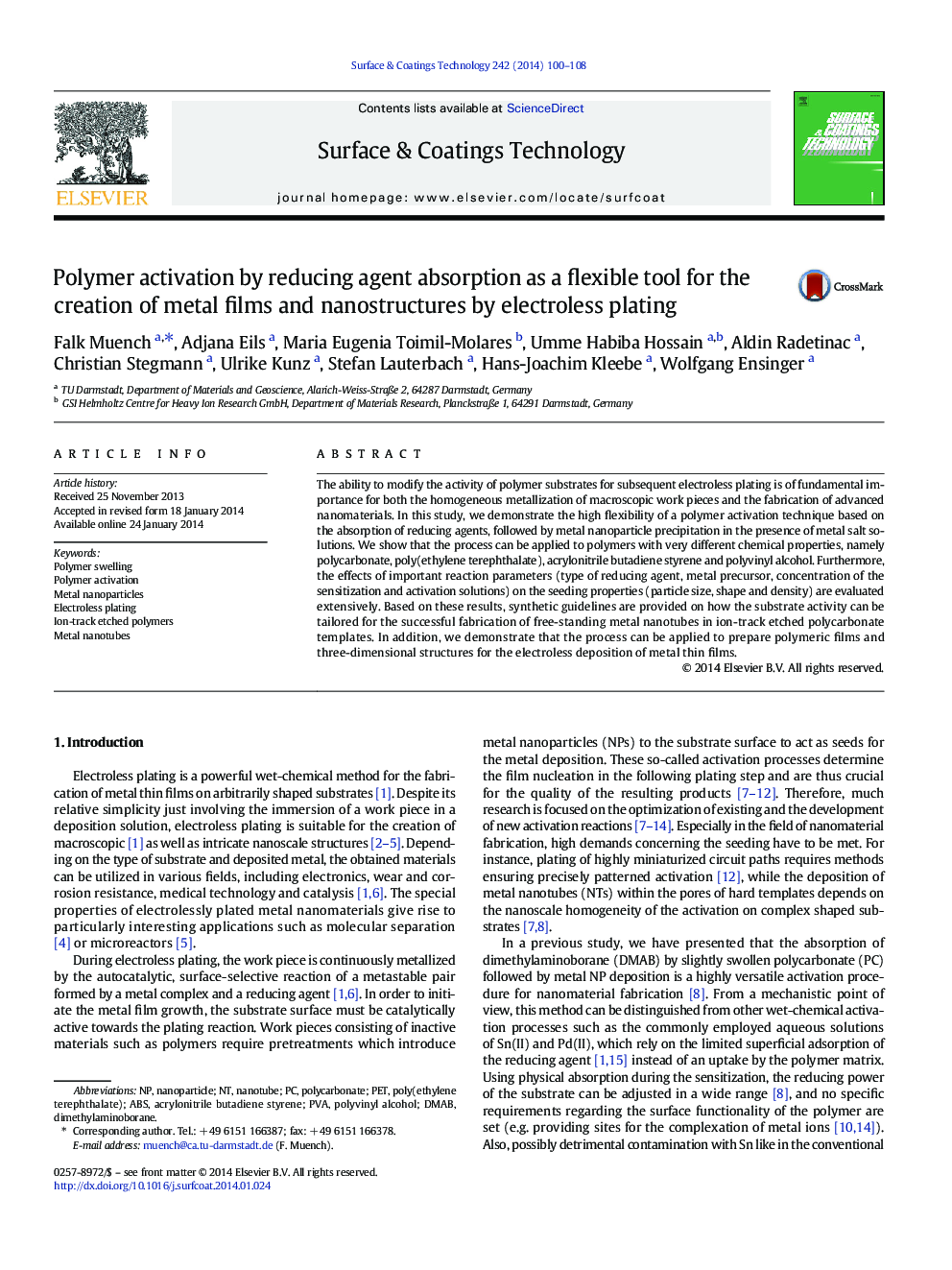| Article ID | Journal | Published Year | Pages | File Type |
|---|---|---|---|---|
| 1657597 | Surface and Coatings Technology | 2014 | 9 Pages |
Abstract
The ability to modify the activity of polymer substrates for subsequent electroless plating is of fundamental importance for both the homogeneous metallization of macroscopic work pieces and the fabrication of advanced nanomaterials. In this study, we demonstrate the high flexibility of a polymer activation technique based on the absorption of reducing agents, followed by metal nanoparticle precipitation in the presence of metal salt solutions. We show that the process can be applied to polymers with very different chemical properties, namely polycarbonate, poly(ethylene terephthalate), acrylonitrile butadiene styrene and polyvinyl alcohol. Furthermore, the effects of important reaction parameters (type of reducing agent, metal precursor, concentration of the sensitization and activation solutions) on the seeding properties (particle size, shape and density) are evaluated extensively. Based on these results, synthetic guidelines are provided on how the substrate activity can be tailored for the successful fabrication of free-standing metal nanotubes in ion-track etched polycarbonate templates. In addition, we demonstrate that the process can be applied to prepare polymeric films and three-dimensional structures for the electroless deposition of metal thin films.
Keywords
Related Topics
Physical Sciences and Engineering
Materials Science
Nanotechnology
Authors
Falk Muench, Adjana Eils, Maria Eugenia Toimil-Molares, Umme Habiba Hossain, Aldin Radetinac, Christian Stegmann, Ulrike Kunz, Stefan Lauterbach, Hans-Joachim Kleebe, Wolfgang Ensinger,
